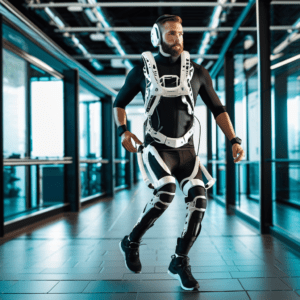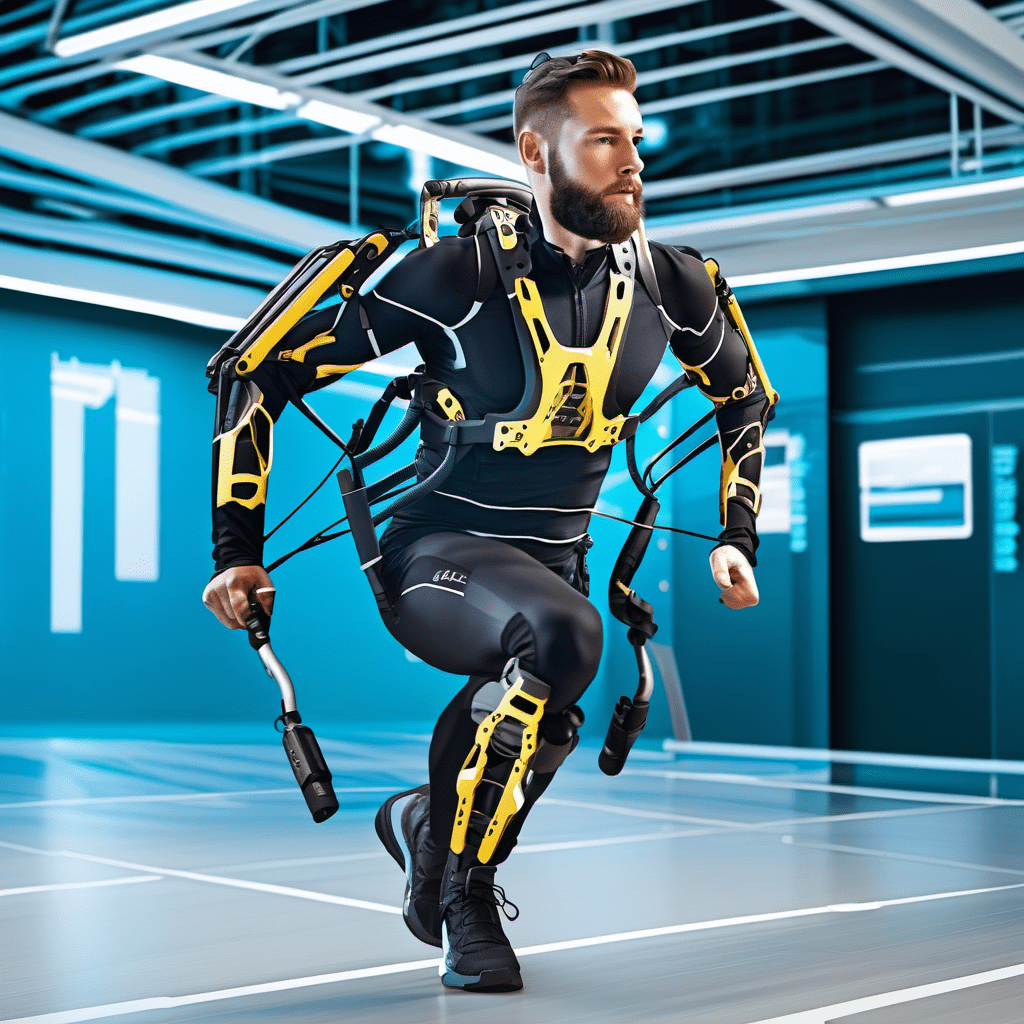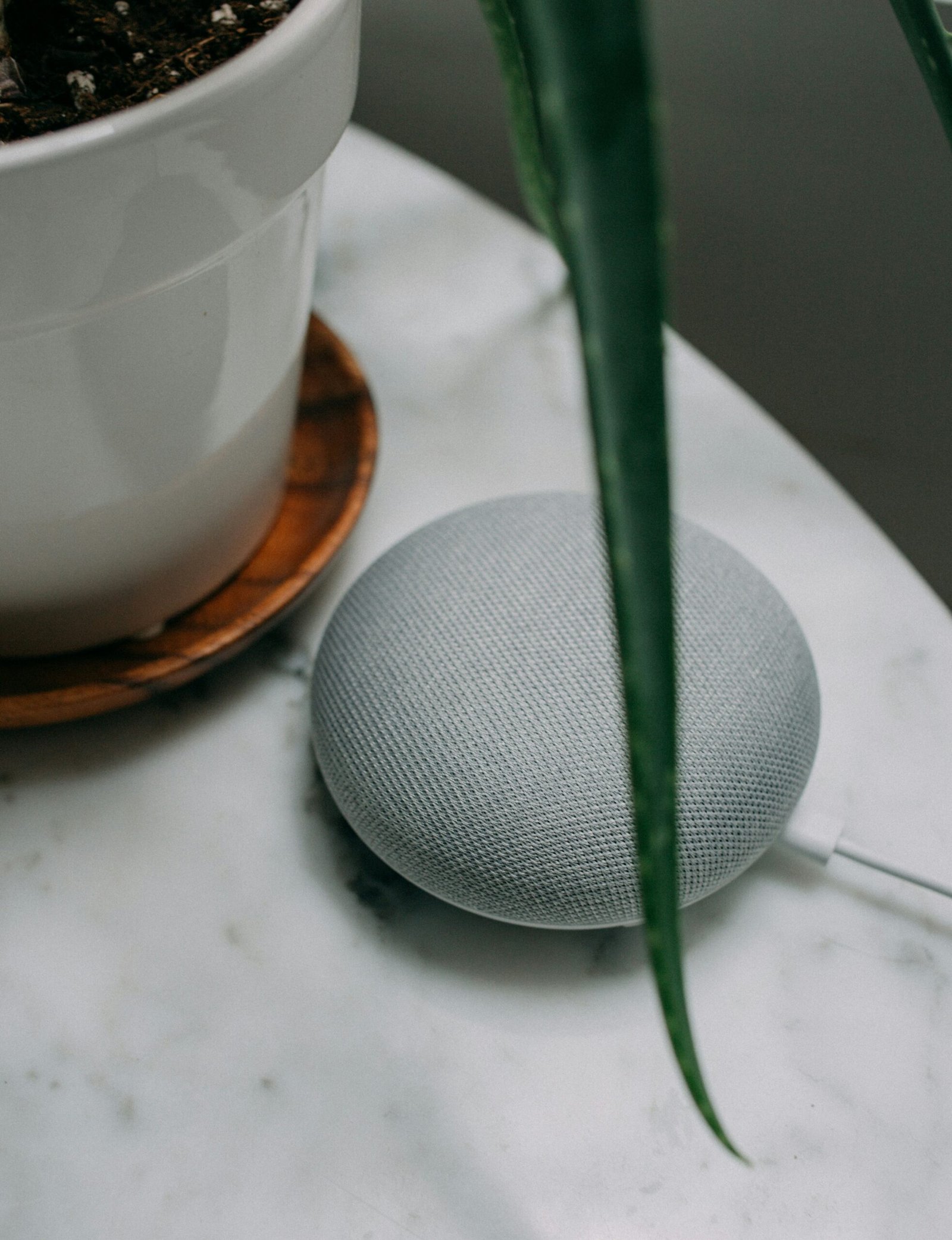The Fascinating World of Exoskeletons and their Impact on Human Performance
Exoskeletons have long been a staple of science fiction, but in recent years, they have become a reality, revolutionizing human performance augmentation.
These wearable robotic devices are designed to enhance the strength, endurance, and overall capabilities of the human body. From military applications to medical rehabilitation, exoskeletons are transforming various industries.
Here are some examples of how exoskeletons can be used to augment human performance:
- Construction: Exoskeletons can help construction workers lift heavy objects and reduce fatigue. This can help to improve safety and productivity.
- Manufacturing: Exoskeletons can help factory workers lift heavy objects and perform repetitive tasks. This can help to improve efficiency and reduce the risk of injuries.
- Healthcare: Exoskeletons can help people with disabilities walk and perform other tasks. This can help to improve their independence and quality of life.
- Military: Exoskeletons can help soldiers carry heavy loads and move through difficult terrain. This can improve their performance and safety.
One of the most significant applications of exoskeleton technology is in the military. Exoskeletons can provide soldiers with enhanced strength and endurance, allowing them to carry heavier loads and cover longer distances without fatigue. This not only improves their overall performance but also reduces the risk of injuries. With exoskeletons, soldiers can navigate challenging terrains and perform physically demanding tasks with ease.
Exoskeletons are also making a profound impact in the field of medical rehabilitation. These devices can assist individuals with mobility impairments to regain their independence and improve their quality of life. Exoskeletons provide support and stability to patients with spinal cord injuries, enabling them to stand, walk, and even climb stairs. By engaging the muscles and promoting movement, exoskeletons facilitate the recovery process and help patients regain their strength and mobility.
Another area where exoskeletons are making a difference is in the industrial sector. Workers in industries such as construction, manufacturing, and logistics often face physically demanding tasks that can lead to fatigue and injuries. Exoskeletons can alleviate the strain on the body by providing additional support and reducing the risk of musculoskeletal disorders. By enhancing the physical capabilities of workers, exoskeletons improve productivity and safety in the workplace.

As exoskeleton technology continues to advance, the potential applications are expanding. In the sports industry, exoskeletons can help athletes enhance their performance and prevent injuries. By providing additional support and stability, these devices can improve running speed, jumping height, and overall athletic performance. Exoskeletons can also be used in rehabilitation programs for athletes recovering from injuries, allowing them to maintain their training and accelerate the recovery process.
While exoskeletons offer numerous benefits, there are also challenges to overcome. One of the main challenges is the weight and bulkiness of the devices. The current generation of exoskeletons can be cumbersome and limit the wearer’s mobility. However, researchers and engineers are continuously working on developing lighter and more ergonomic designs to address these limitations.
Another challenge is the cost of exoskeleton technology. Currently, exoskeletons are quite expensive, making them inaccessible to many individuals and organizations. However, as the technology advances and becomes more widespread, the cost is expected to decrease, making exoskeletons more affordable and accessible to a wider range of users.
In conclusion, exoskeletons are revolutionizing human performance augmentation across various industries. From military applications to medical rehabilitation and industrial sectors, these wearable robotic devices are enhancing strength, endurance, and overall capabilities. While there are challenges to overcome, the potential benefits of exoskeleton technology are immense. As the technology continues to advance, we can expect to see even more innovative applications and improvements in exoskeleton design.
Ready to embark on a journey into the future of human potential? Click InnoVirtuoso – Brain Computer Interface Topics now to start exploring! Don’t miss out on the chance to expand your horizons, challenge your perspectives, and stay informed about the incredible world of Brain-Computer Interfaces.







